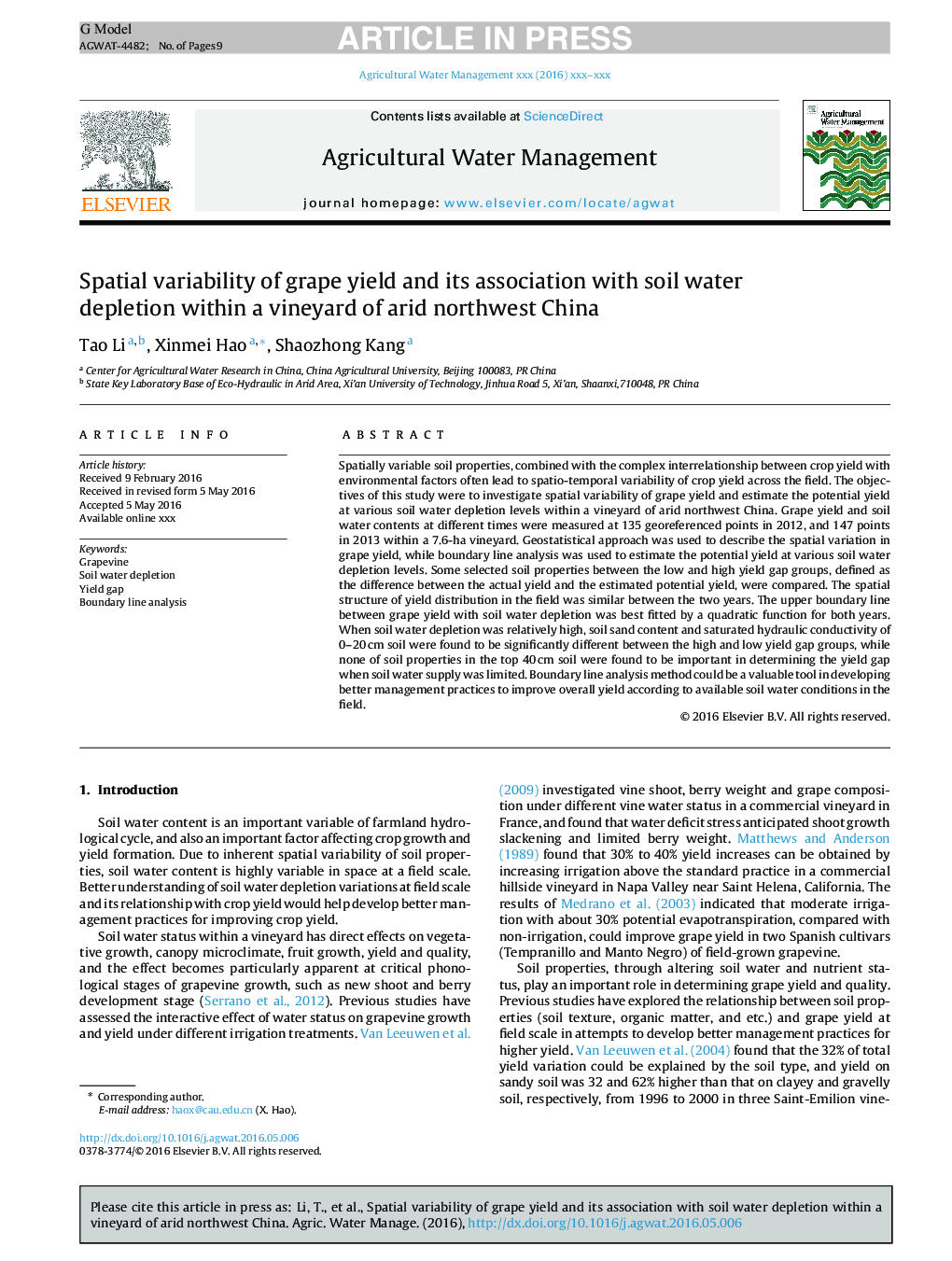| Article ID | Journal | Published Year | Pages | File Type |
|---|---|---|---|---|
| 5758600 | Agricultural Water Management | 2017 | 9 Pages |
Abstract
Spatially variable soil properties, combined with the complex interrelationship between crop yield with environmental factors often lead to spatio-temporal variability of crop yield across the field. The objectives of this study were to investigate spatial variability of grape yield and estimate the potential yield at various soil water depletion levels within a vineyard of arid northwest China. Grape yield and soil water contents at different times were measured at 135 georeferenced points in 2012, and 147 points in 2013 within a 7.6-ha vineyard. Geostatistical approach was used to describe the spatial variation in grape yield, while boundary line analysis was used to estimate the potential yield at various soil water depletion levels. Some selected soil properties between the low and high yield gap groups, defined as the difference between the actual yield and the estimated potential yield, were compared. The spatial structure of yield distribution in the field was similar between the two years. The upper boundary line between grape yield with soil water depletion was best fitted by a quadratic function for both years. When soil water depletion was relatively high, soil sand content and saturated hydraulic conductivity of 0-20Â cm soil were found to be significantly different between the high and low yield gap groups, while none of soil properties in the top 40Â cm soil were found to be important in determining the yield gap when soil water supply was limited. Boundary line analysis method could be a valuable tool in developing better management practices to improve overall yield according to available soil water conditions in the field.
Related Topics
Life Sciences
Agricultural and Biological Sciences
Agronomy and Crop Science
Authors
Tao Li, Xinmei Hao, Shaozhong Kang,
